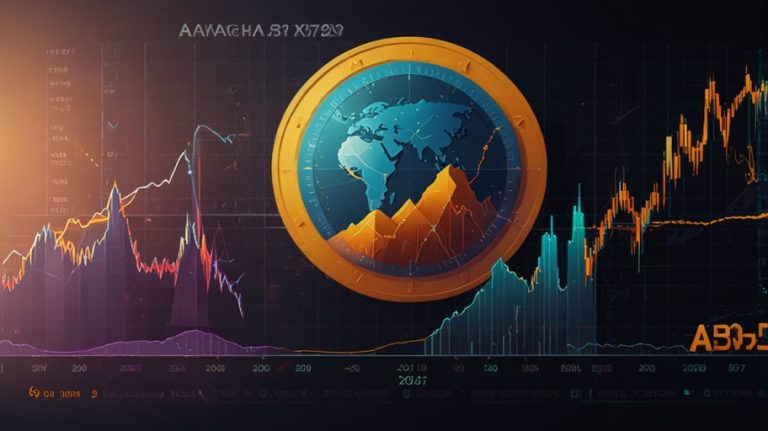One of the cryptocurrencies that ranked in the eleventh place, Chainlink, has been in the spotlight as it is traded at $13.12, which is a 3.31% increase over the past day. It still holds a market cap of $8.62 billion, and 657.09 million LINK tokens are currently in circulation. The volume for the day has seen $284.17 million in transactions, an indicator of the increased interest and trading activity of investors.
After the recent movement in the prices, LINK has bounced back from around the $12.89 level, and the technical signals indicate the bullish trend has returned. The token has successfully passed the $13.20 resistance level with a lot of volume that confirms the confidence of the market, and it is now aiming at the $13.80 to $14.00 area. Thus, the experts’ opinion is that a continuation of the token’s price above these levels would open the way for bulls and thus, for further positive progress in the next few weeks.
The main value of Chainlink lies in its decentralized oracle network that acts as an intermediary between smart contracts and the real world. This unique feature has not only made Chainlink the basis of the decentralized financial infrastructure but has also attracted a large user base globally. With DeFi and blockchain adoption speed being interconnected, the company’s technology is consistently a significant appeal to developers and institutional partners, and it is a demand that can be reinforced further in the coming year.
Although pessimistic views are prevailing according to the technical chart, the general sentiment by April 2025 is nevertheless quite optimistic. The forecast for Chainlink’s price in April is a range of $11.80 to $13.36, with an expected mean value of $12.58. In the event of a clearly successful overcoming of resistance points, a scenario exists, according to experts, that would allow reaching the zone $14.50-$15.50.
The chief area of support for LINK is situated at $12.28, and the resistance that lies between $14.19 and $14.58 might be a barrier to benefits for a short period of time. An important break above $14.58 would mark a powerful growth signal and open the possibility of creating new high resistance levels, including the $17.45 area. If unsuccessful in finding good support higher than $12.45, a probable downward correction could bring the price to the $11.60 zone, before any new upward trend starts.
Chainlink’s price predictions for the rest of 2025 are diverse, as the forecasts display both positive and negative feelings about the possibility of the price hitting the roof. According to some analysts, LINK will be traded at a maximum of $19.63 this year with a minimum of $16.88; the average price is anticipated to be around $17.53. There are other analysts who go further and set new targets, describing LINK’s possibility to touch $25 or even $39 if prices keep going up and the general outlook of the crypto market remains good.
Chainlink’s future is bright due to its ongoing integration into major blockchain ecosystems such as Arbitrum, Avalanche, and Ethereum. The use of the network as a secure and trustworthy source of data streams for smart contracts is increasingly shaping up as a crucial factor in real-world asset tokenization, cross-chain interoperability, and DeFi adoption by the institutional sector. The indicated trends largely account for the rising confidence of LINK in the minds of stockholders and analysts as far as its future direction is concerned.
Even though the last price action had a bullish mood, the way of Chainlink in 2025 is not without any challenges. At the beginning of this year, the LINK token has either moved inside or remained below the parallel downtrend with high volatility.
Among those technical indicators that are available, the Relative Strength Index and the MACD showed conflicting signs for the near future, followed by uncertainty regarding the decisive outcome of the trend. Instead, the recovery and the higher lows currently indicate that the bulls are in control of the market situation, at least for the time being.
According to market experts, trading volumes and on-chain metrics should be the focus of all market players as they are crucial resources from which they can deduce the likelihood of sustained gains or trend reversals to make their trading decisions.
A market cap ratio of 3.29% clearly establishes LINK as the point of contact for the trading of the tokens. The liquidity is not the only truth visible from the trading figures; it opens the door to the large price jumps and the attraction of institutional interest as well.
So far, Chainlink has not managed to pass the bar set at the all-time high of $52.88 in May 2021, the current price being under that level; nevertheless, the token’s resilience and ability to outshine many alts during market corrections have convinced some analysts that there is a good chance of returning to the previous peaks in the years ahead, especially if the entire market of crypto-currencies becomes bullish for a relatively long time again.
The view shared by the top experts states that Chainlink’s prominent function in the blockchain ecosystem and its solid technical framework set the project on the growth path. Forecasts for 2026 have even higher aspirations, with some experts saying that LINK could reach $30 in 2026, $41 in 2027, and eventually, in 2028, by which time, even $59 should be attainable, only if the prevailing trends in the area of adoption of technology and the evolution of technology per se occur as previously seen.
In conclusion, Chainlink as of now is circling from an optimistic point of view regarding progress and future- this is the vibe that most market actors perceive. The recent rise in price, the strong fundamentals, and the growing ecosystem will be the signals to investors that the cryptocurrency LINK is still in a strong position to grow in 2025.
Traders are advised to follow closely the main support and resistance levels, as the breaking of those areas could be the first step in the decision of the next biggest move during Chainlink’s continuous journey as a top-tier crypto asset.












 Bitcoin
Bitcoin  Ethereum
Ethereum  Tether
Tether  XRP
XRP  Solana
Solana  USDC
USDC  Cardano
Cardano  TRON
TRON  Lido Staked Ether
Lido Staked Ether  Avalanche
Avalanche  Toncoin
Toncoin